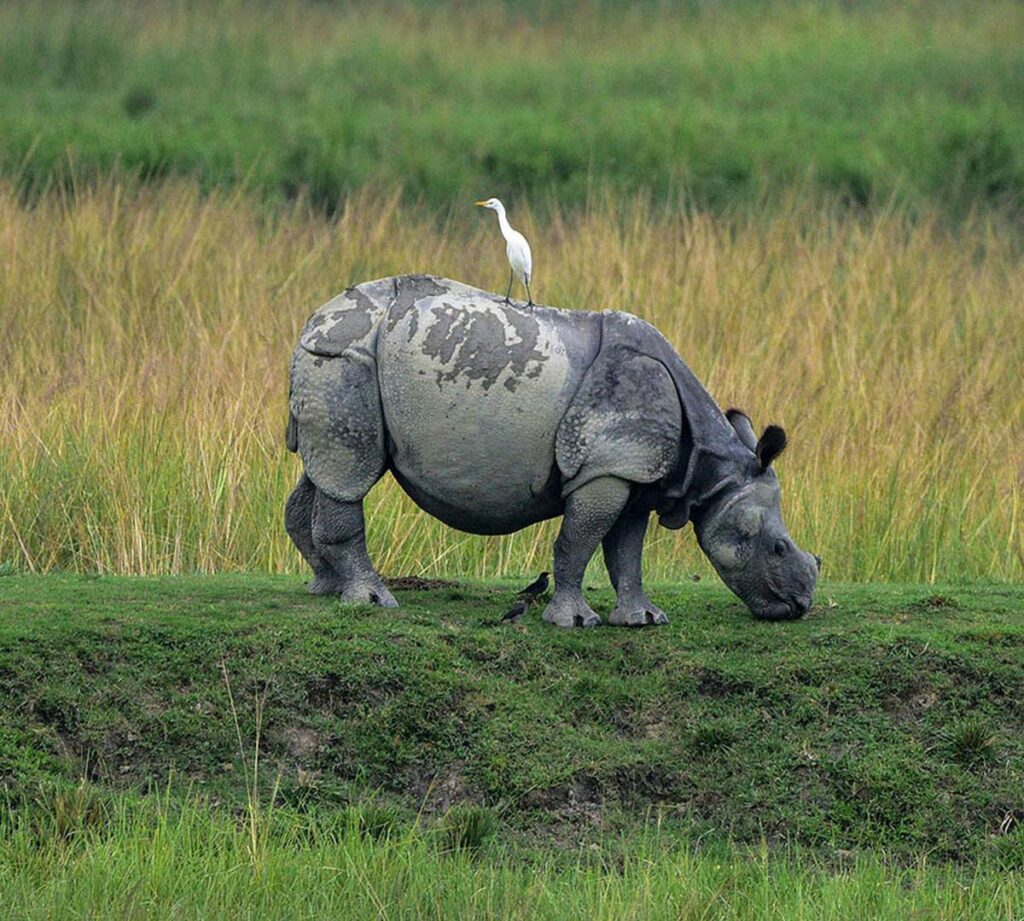Remembering Kaziranga National Park on World Rhino Day

World Rhino Day is celebrated every year on September 22. Rhinos are an important part of the ecosystem, which is why they are often referred to as “umbrella species”. They act as keystone species, in the sense that without them, other species would be negatively affected.
When we think about rhinos in India, we are spontaneously reminded of Kaziranga National Park, which is located in the Golaghat and Nagaon districts of Assam. It is known globally for its conservation efforts to save the population of the Indian one-horned rhinoceros. Today, the national park is home to more than 2,600 rhinos, which make up 70% of the world’s rhinoceros population.
The global number of rhinos had reduced to 200 in the early 20th century, largely due to hunting for sport or being killed as agricultural pests. The species of rhinos were declared endangered in 1975. The Kaziranga National Park single-handedly helped raise the population of rhinos and saved them from going extinct.
The history of Kaziranga National Park dates back to before India’s Independence. Baroness Mary Victoria Leiter Curzon, the wife of Lord Curzon, the then viceroy of India visited Kaziranga in 1904. Although the rhino population in Kaziranga at that point was fairly high, the former failed to spot any, and only saw hoof marks. It is rumoured that the famous Assamese animal tracker, Balaram Hazarika, suggested the need for wildlife conservation for rhinos at Kaziranga. Baroness Curzon brought it up to Lord Curzon, who went ahead with the implementation of the idea. In 1905, the Kaziranga Reserve Forest was created.
UNESCO declared the national park to be a World Heritage Site in 1985. The national park was declared a Tiger Reserve in 2008.

